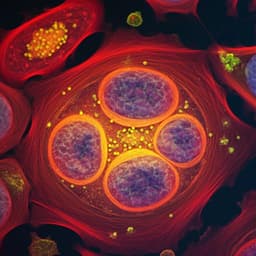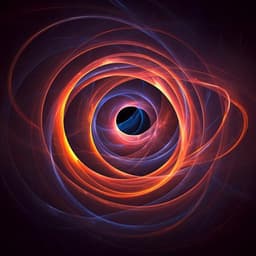Introduction
Super-resolution imaging, pushing beyond the diffraction limit, is a significant challenge, particularly when dealing with the detection and angular separation estimation of faint, closely spaced incoherent sources. Classical methods struggle with this, especially when one source is much dimmer than the other, as often occurs in astronomical observations (e.g., exoplanet detection) or microscopy (e.g., dimer detection). Quantum techniques offer a potential solution by leveraging quantum probe states and measurements to enhance information extraction. Previous research has shown that quantum techniques can improve various aspects of imaging, such as noise reduction and resolution enhancement beyond the classical Rayleigh limit. These advances include ghost imaging and quantum-enhanced microscopy. However, optimal implementation of these techniques is frequently challenging. While entangled sources offer potential advantages, they are not always practical; this paper addresses the situation when source engineering is not feasible. The Rayleigh criterion sets the classical resolution limit; this paper focuses on super-resolution beyond this limit. A key challenge is to reliably detect the presence of multiple sources before estimating their separation. Direct imaging (DI) is a straightforward approach, but suffers limitations at sub-Rayleigh separations because of the blurring effect of the point spread function (PSF). This work demonstrates a superior approach using hypothesis testing and quantum metrology to overcome these challenges.
Literature Review
The paper reviews the existing literature on quantum techniques for enhancing hypothesis testing, parameter estimation, and imaging. It highlights the potential of quantum metrology to improve the precision of measurements and the use of quantum hypothesis testing to minimize the probability of false negatives when detecting weak signals. The authors discuss previous work on super-resolving incoherent sources, emphasizing the need for a reliable method to first confirm the presence of multiple sources before proceeding to angular separation estimation. The limitations of direct imaging at sub-Rayleigh separations are discussed, especially in the context of exoplanet detection and microscopy, where distinguishing between one bright and one faint source is extremely difficult. They also review existing quantum super-resolution techniques and their limitations.
Methodology
The paper proposes and experimentally validates a novel method for super-resolution imaging based on a simple two-input interferometer. The method involves two key tasks: (1) hypothesis testing to determine whether one or two sources are present, and (2) quantum parameter estimation to determine the angular separation of the sources, assuming two sources are present. The theoretical framework uses quantum hypothesis testing, with the goal of minimizing the probability of false negatives (type-II errors) while accepting a certain probability of false positives (type-I errors). The quantum Stein Lemma is employed to quantify the error exponent in terms of the quantum relative entropy (QRE). The ultimate precision limit for parameter estimation is given by the quantum Cramér-Rao bound, related to the quantum Fisher information (QFI). The proposed interferometer setup uses two optical collectors to collect light from the sources and then utilizes a 50:50 beam splitter, a phase shift (α), and photon counters to perform the measurements. The relative entropies for one-source versus two-source hypotheses are calculated. The authors demonstrate that this simple interferometric approach, unlike more complex techniques like SPADE (spatial-mode demultiplexing), is suitable for large-baseline instruments. For the experimental setup, they use a VCSEL operating in pulsed mode, electro-optic modulators for phase and amplitude modulation to generate pseudo-thermal states, and a custom-made optical mask to create two pseudo point-like sources. The collected light is coupled into a balanced interferometer and detected using Si-SPAD detectors. A feedback control system ensures high interferometric visibility. The experimental procedure involves varying the intensity imbalance between the two sources (ε) and angular separation and measuring the photon detection probabilities. Maximum likelihood estimation is used to extract the optical path difference and estimate the angular separation. The mean square error (MSE) is used to quantify the precision of the angular separation estimation.
Key Findings
The experimental results show that the proposed two-input interferometer achieves sub-Rayleigh scaling for the state discrimination task. The relative entropy for the interferometric method significantly surpasses that of direct imaging, particularly for small values of ε (the relative intensity of the weaker source). The measurements closely match the theoretical predictions from the QRE. For the angular separation estimation, the experimental results demonstrate near-optimal performance, saturating the quantum Cramér-Rao bound and achieving unbiased estimates even well below the Rayleigh limit. With an angular separation of 1.48 × 10⁻⁴ rad, the root mean-square error in the angular separation estimation is within 1.7% of the true value—a two- to three-order-of-magnitude improvement over direct imaging. The method's effectiveness was shown across a range of angular separations, consistently remaining within a factor of 2 of the quantum Cramér-Rao bound.
Discussion
The results demonstrate the effectiveness of the proposed method for achieving super-resolution imaging using a simple and experimentally feasible setup. The significant improvement in accuracy over direct imaging highlights the advantages of employing quantum techniques for this challenging task. The method is particularly suitable for situations where source engineering is not an option, such as astronomical observations. The simplicity of the two-input interferometer, compared to more complex quantum imaging techniques, makes it highly practical for applications in large-baseline instruments. The theoretical analysis focused on single photons, but the results extend to the regime of thermal sources, relevant for astronomical observations. Although the experiment was performed with weak thermal sources, the single-photon post-selection explains the experimental data's saturation of the single-photon quantum limit. The authors discuss potential applications in existing stellar interferometers, suggesting adaptations for phase stabilization and the potential of integrating this technology in larger-scale astronomical instruments.
Conclusion
This research successfully demonstrated a novel approach to super-resolution imaging using a simple two-input interferometer. This method significantly outperforms classical direct imaging in both hypothesis testing and parameter estimation tasks for resolving closely spaced incoherent sources. The experimentally verified results show a substantial improvement in the accuracy of angular separation estimation, particularly for faint secondary sources. Future work could explore extensions to multiple sources, composite hypothesis testing, and the exploration of the number of modes required for more complex scenarios. The simplicity and scalability of the proposed technique suggest broad potential for applications in astronomy and other fields requiring high-precision imaging of faint, closely spaced objects.
Limitations
The current experimental setup uses a pulsed light source to simulate thermal radiation. While this mimics the characteristics of thermal light in the weak signal regime, it might not perfectly capture all aspects of continuous radiation from celestial bodies. The phase stabilization of the interferometer, crucial for achieving high precision, could be challenging in real-world applications, particularly for large-baseline instruments. The precision of the angular separation measurement is dependent on the interferometer's visibility, highlighting the need for maintaining high visibility for optimal performance. Higher photon counts could further increase the precision, but higher interferometric visibility would be required to mitigate suboptimal phase effects. The study focused on point-like sources; extending the method to more complex source geometries would require further investigation.
Related Publications
Explore these studies to deepen your understanding of the subject.







